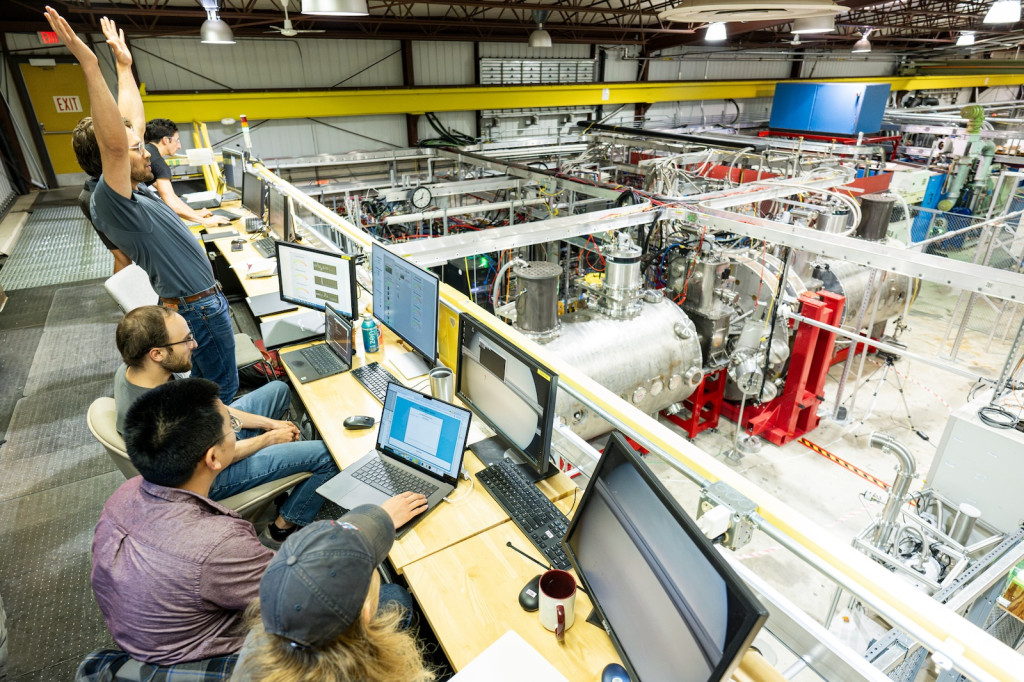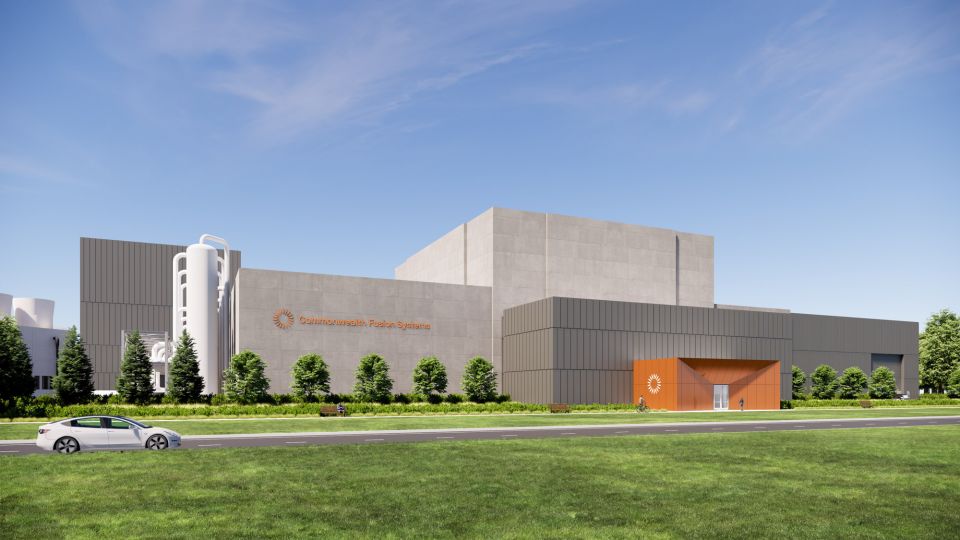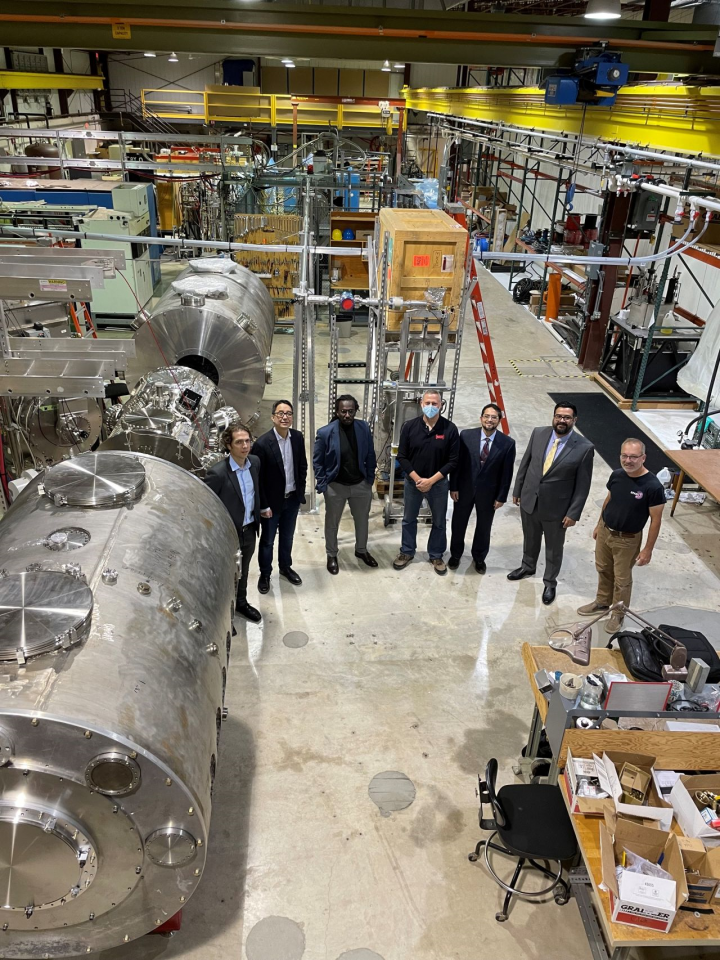WHAM: Realta gets first plasma with 17 Tesla magnets in mirror fusion test

The magnetic mirror fusion concept dates to the early 1950s, but decades ago it was sidelined by technical difficulties and researchers turned to tokamak fusion in their quest for confinement. Now it’s getting another look—with significantly more powerful technology—through WHAM, the Wisconsin HTS Axisymmetric Mirror, an experiment in partnership between startup Realta Fusion and the University of Wisconsin–Madison.
On July 18, Realta announced that it had successfully used superconducting magnets supplied by Commonwealth Fusion Systems (CFS) to apply the highest steady magnetic field ever reached in a fusion plasma experiment in a “major milestone towards commercial fusion energy.”
The achievement: Operating WHAM, Realta and UW–Madison researchers formed and held a plasma with a magnetic field strength of 17 Tesla in WHAM in the first use of high-temperature superconducting (HTS) magnets in a magnetic mirror configuration. After receiving the magnets earlier in the month, the team achieved first plasma on July 15. (Watch the moment of plasma creation here.)
“This is the culmination of a huge effort from the WHAM team and a significant step towards fusion energy power plants,” said Cary Forest, a professor at the University of Wisconsin and chief scientific officer of Realta. “With the WHAM experiment we have brought together advances in superconductor technology and plasma physics to demonstrate the potential of the compact magnetic mirror as a fusion energy system.”
UW–Madison issued its own news release on July 18 celebrating the “major milestone in UW–Madison fusion energy research,” which was achieved in UW’s Physical Sciences Lab in Stoughton, Wis., nearly 20 miles southeast of Madison.
“WHAM is a unique experiment, setting a world record in magnetic field strength for magnetically confined plasmas and equipped with intense heating systems while still being a hands-on experiment for both graduate and undergraduate students,” said Jay Anderson, a scientist at UW–Madison and cofounder of Realta. “Realta over the last year and a half has really amplified what the UW team been able to accomplish.”
A historical revival: Magnetic mirror machines confine plasma with inward-facing magnets that produce a plasma shape that CFS has likened to a Tootsie roll candy. The magnetic mirror was one of the leading fusion energy concepts in the United States until the 1980s, but the technology at that time limited the potential of magnetic control, according to Realta. Recent advances in superconducting technology and plasma control were enough for Forest and Anderson to design a more compact and lower cost magnetic mirror system.
“Today's demonstration puts the compact magnetic mirror firmly back in the race towards commercial fusion energy. It’s a giant leap forward for a concept that promises economically viable, zero-carbon heat and electricity,” said Kieran Furlong, chief executive officer of Realta.
Realta’s beginnings: The WHAM experiment began in 2020 as a partnership between UW–Madison, the Massachusetts Institute of Technology, and CFS, funded by a $10.3 million award from the DOE’s Advanced Research Projects Agency–Energy (ARPA-E). CFS developed the magnets while UW–Madison built the mirror machine. Now, WHAM will operate as a public-private partnership between UW–Madison and Realta Fusion, which was spun out of the WHAM project in 2022 and is still based in Madison.
According to Realta, the company funds and staffs the ongoing WHAM project through a sponsored research agreement with the University of Wisconsin, with help from DOE funding and its partners.
Commonwealth’s magnet strength: According to CFS, WHAM uses two identical flat and thin magnets that can reach a magnetic field of 17 tesla in the bore and over 20 Tesla on the magnets themselves—about 400,000 times stronger than Earth’s magnetic field.
CFS designed and manufactured those magnets and announced their delivery to UW on July 12 as “the first products shipped as part of the company’s strategy to build magnets not just for its own power plants but also for other promising applications.”
CFS’s “primary mission remains delivering fusion devices of its own design,” including the SPARC tokamak now under construction at the company’s headquarters in Devens, Mass. But the company sees the potential for revenue through a “horizontal supplier business” based on the its magnet technology, which uses HTS tape in “self-contained systems that have all the needed functions, including cryogenic refrigeration, vacuum pumping, control, and monitoring.”
“We have the capability to build some of the highest-power magnets in the world,” said CFS chief commercial officer Rick Needham. “Designing and building these magnets for other applications is a business opportunity that could be in the billions of dollars.”
Mapping milestones: Realta Fusion was named one of eight awardees in the DOE’s Milestone-Based Fusion Development Program in May 2023. More than one year later, Realta announced on June 7 that it had signed a formal partnership agreement with the DOE that includes funding for the first phase of the program. During the five-year Milestone timeline, Realta is to demonstrate technical progress toward a commercially feasible compact magnetic mirror fusion energy system and a design for a fusion pilot plant.
First plasma is just a start. For Realta—and other fusion developers—many difficult technical questions still need to be answered.
“We want to find the showstoppers,” said Forest, quoted in a news article from UW–Wisconsin. “Can we build the magnets? Can we increase the stability of the plasma, which is inherently unstable? How well can we confine the plasma? These questions will take several years to address well, and if we can understand and predict everything about this device, then it will provide the foundations for the next device, the break-even device.”










